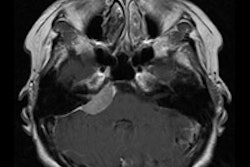Many radiologists disagree on the management of incidental findings detected at body CT scans, according to a study published in the November issue of the Journal of the American College of Radiology.
Not unlike the effect of high-resolution close-ups on aging Hollywood stars, continual advances in CT resolution are exposing radiologists to findings they might wish they weren't seeing.
Meanwhile, guidelines, such as the JACR's white paper on the management of incidental findings, are few and far between.
In the new study, Dr. Pamela Johnson and colleagues from Johns Hopkins University, New York University, and Stanford University sent a multiple choice survey to 27 radiologists at three academic institutions.
The survey asked radiologists how they would handle 12 incidental CT findings in a hypothetical 45-year-old woman with no history of malignancy (JACR, November 2011, Vol. 8:11, pp. 762-767).
The dozen findings included a 1-cm thyroid nodule, a 5-mm noncalcified lung nodule, coronary artery calcification, a 2-cm adrenal nodule, a 2-cm pancreatic cyst, a 1-cm enhancing liver lesion, a 2-cm high-density renal cyst, short-segment small bowel intussusception, a 1-cm splenic cyst, focal gallbladder wall calcification, and a 3-cm ovarian cyst in both a premenopausal woman and a postmenopausal woman, according to the authors.
Participants' choices ranged from "do not report" to recommendations for interventional procedures. The results showed only 70% or greater agreement for six of the 12 findings.
|
For that matter, there wasn't 100% agreement on any of the 12 findings.
"An equally essential discovery is the lack of agreement across academic institutions and even within individual institutions for other incidental findings," Johnson said in a statement accompanying the release of the study.
The results suggest that individual radiology departments need to develop internal guidelines to enable radiologists to make the best evidence-based recommendations "on the basis of existing evidence and provide consistent advice to referring physicians," the authors concluded.




















